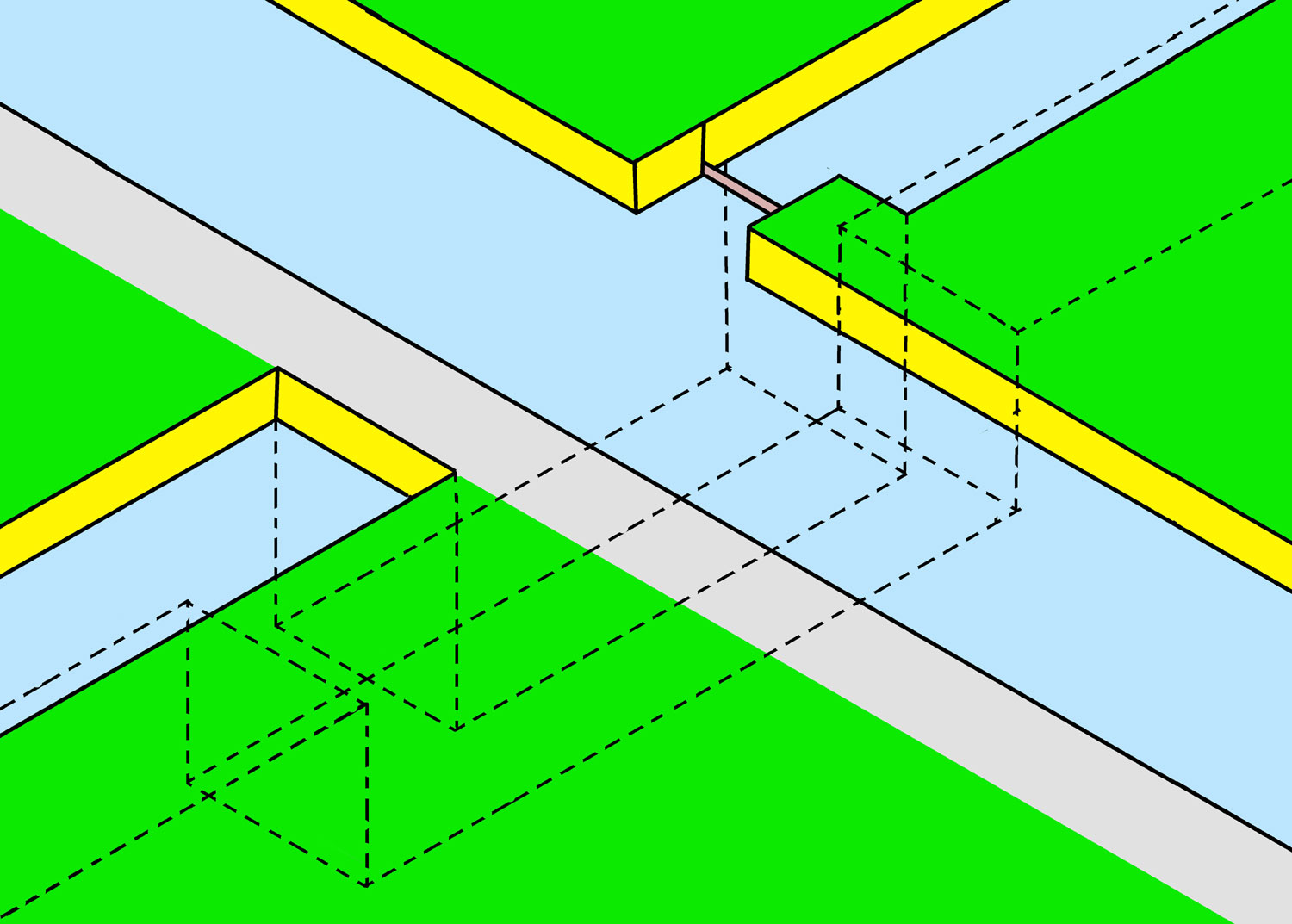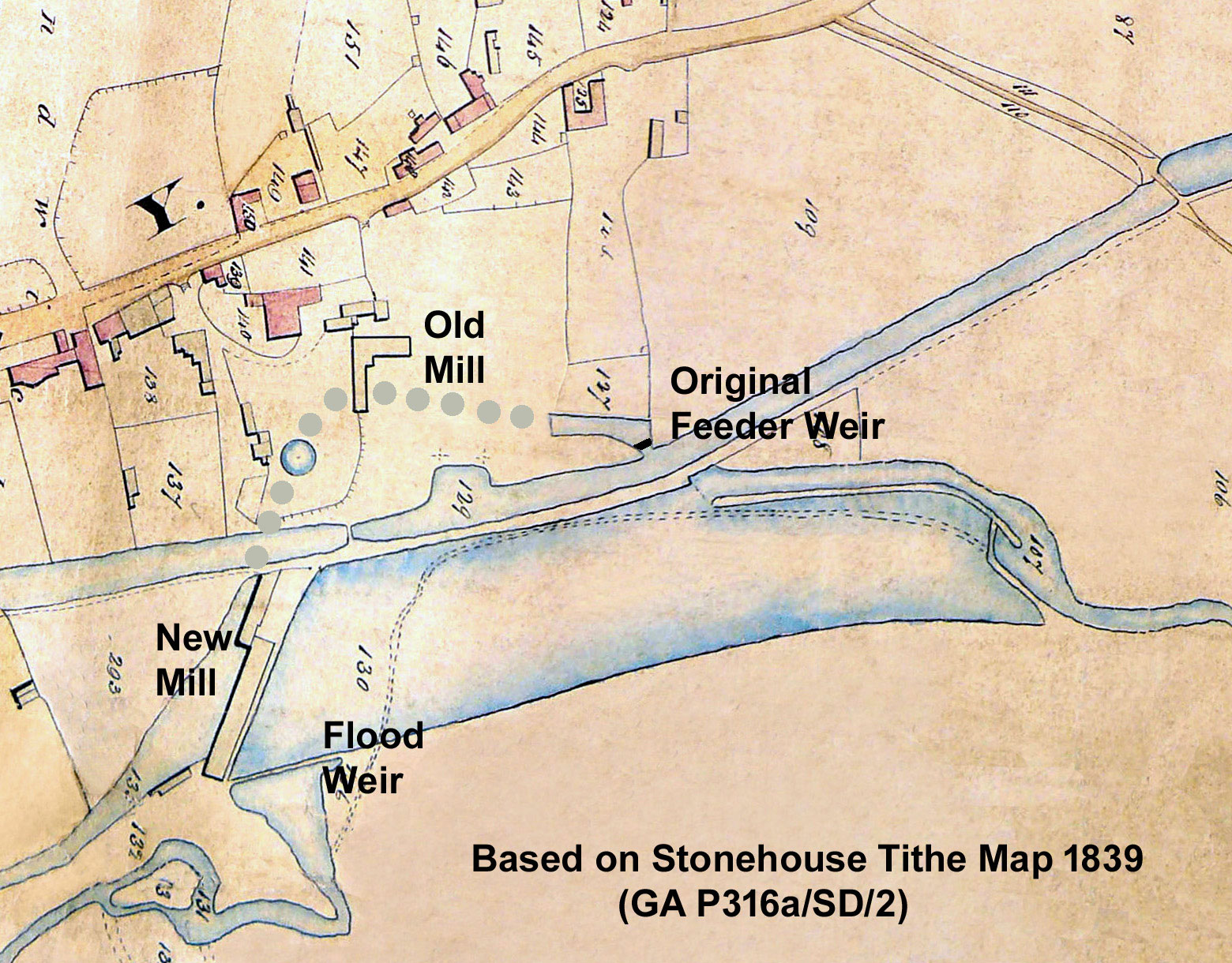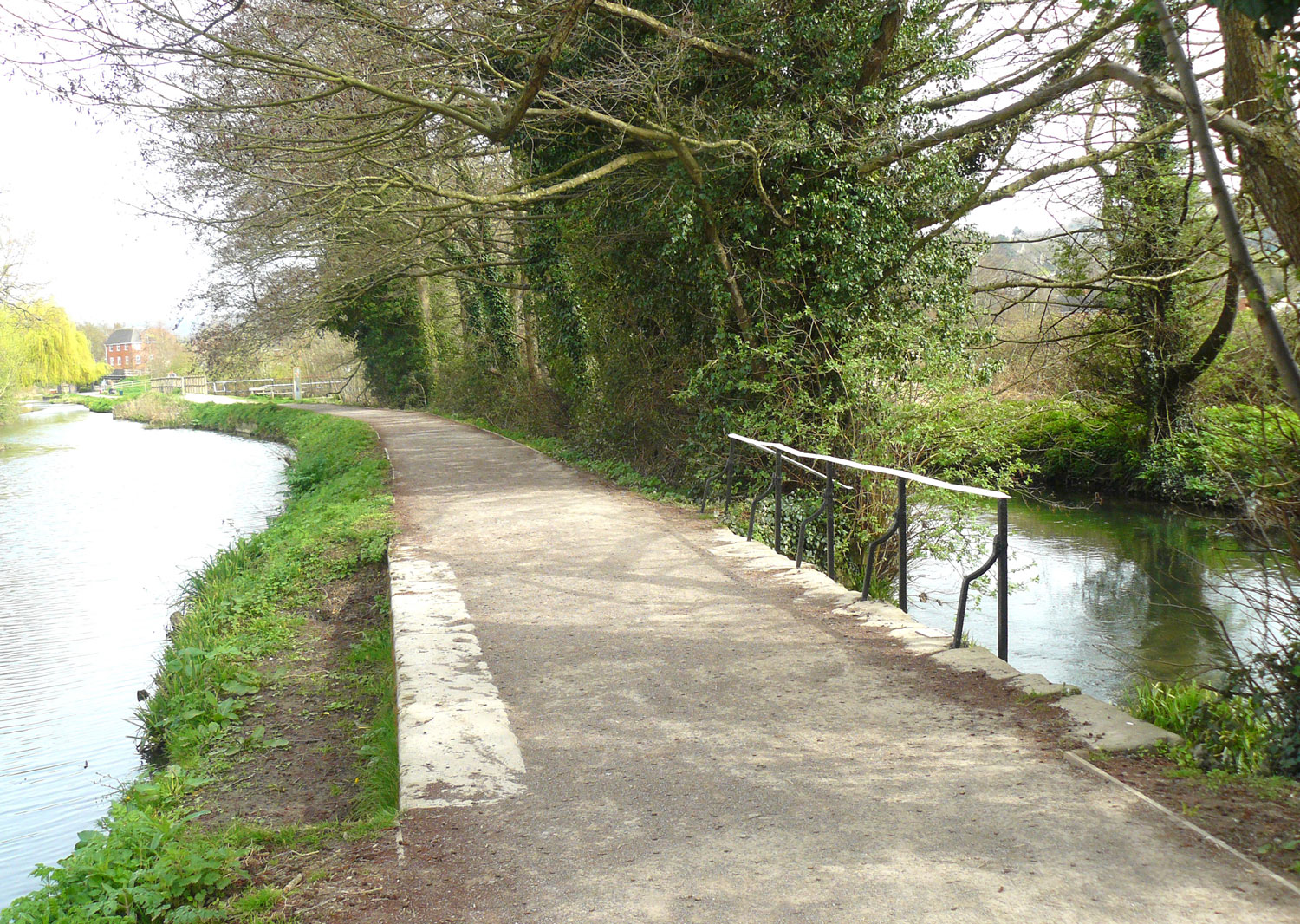Hugh Conway-Jones sheds new light on the relationship between the Stroudwater Company and local mill owners with particular regard to the management of water at Ebley Mill. This article first appeared in Warp & Weft, the magazine of the Stroudwater Textile Trust, published November 2021.
Proposals to build a canal in the valley of the River Frome brought much opposition from mill owners who feared loss of water to power their mills. This concern was reasonable because the plan did not include any reservoir and so the canal would be totally reliant on water from the River Frome to work the locks. To answer this, the promoters published evidence showing that the water needed by the canal would be much less than the amount that currently flowed over mill weirs, particularly at weekends. They argued that there would be no problem provided the relevant parties worked together to share the water. To try to provide a framework for this sharing, the Stroudwater Company's 1776 Act of Parliament gave them the right to take what water they needed but with certain conditions. If taking the water was likely to disrupt the operation of a mill, they were required to give notice and then pay compensation of two shillings per hour for the first 12 hours, then three shillings per hour for every hour afterwards.


To provide the necessary feeds, the canal was planned to intersect the river just upstream of Lodgemore, Ebley and Whitminster Mills. During construction, however, it was realised that this arrangement would lead to much silt being deposited in the canal, and so there was a late change of plan. Instead of the river and canal intersecting at each point, the main flow of the river was instead carried under the canal through culverts in the form of an inverted siphon. Nearby, a feeder weir with adjustable wooden boards allowed the river to feed the canal when the river was high. In this way, the loss of water associated with working the locks could usually be made up on Sundays when the mills were not working. If required, the rate of feed could be increased by manually drawing out one or more boards, and this was an important responsibility of the relevant lock keeper.
As things turned out there was not a great need to feed water into the canal at Lodgemore after the Thames & Severn Canal opened, as this provided a useful feed at the top end of the canal. Also there was no limit to the feed at Whitminster after the Gloucester & Berkeley Canal Co bought the water rights at the lower end of the river. So for most of the life of the canal, the main concern was about the water feed into the canal at Ebley.
In the beginning, there were a few difficulties, and in the 1790s lock keepers twice had to be reminded that 'no more water be taken at the different Feeders into the Canal than is essentially necessary for the Navigation Reason'. Generally, however, good co-operation allowed the arrangements described above to work well, although there were still times during dry periods when the mills were left short of water. In 1818, an association of mill owners tried to claim damages for shortage of water in the river on the grounds that the canal was taking more because traffic had increased. However, the case was not pursued after the Company took legal advice which noted that the mills had also been enlarged, increasing their need for water, and that no new act had occurred to justify any compensation.
More specific difficulties were generally resolved amicably. In 1814, several vessel owners complained about low water in the Ebley level in spite of the lock keeper drawing as much water from the river as he could. At first it was thought that the culvert at Ebley was leaking, but then the Company's surveyor spotted that water was flowing out of the pound and down a ditch to a place used for washing wool. A stiff letter was sent to mill owner Stephen Clissold, and the bank was repaired within three days.
When the canal was desperately short of water in 1820, the Company did need to use their emergency powers to facilitate topping up. In September and again in October they wrote to Clissold giving formal notice to shut down the cloughs at Ebley mills and promising to pay compensation as specified in the Act. During the following year, another letter asked for the mill flood gates to be drawn up to lower the river level so that the culvert under the canal could be repaired.


Meanwhile, major changes were taking place at Ebley, as a huge new mill with four waterwheels was built on the south side of the canal in 1818, and the main course of the river was changed to feed a huge storage pond for the extra water needed. The canal feeder weir initially remained on the north side of the culvert that formerly carried the river to the old mill but which now only fed a much reduced channel carrying a small flow of water used for scouring wool.
Unfortunately, by 1830 it was realised that the culvert was defective and water was often flowing from the canal into the river. To prevent this, a coffer dam was built across the south side of the culvert with the height chosen to prevent the canal loosing water when the river was low but still allowing the canal to be fed when the river was high. A curious side effect of this was that the water reaching the scouring house was found to be too warm in summer as it was only the surface layer of the river that spilled over the coffer dam. To remedy this, the defective culvert was replaced and adjustable boards were added to the coffer dam for better regulating the feed to the canal and the scouring house.
Ebley Mill changed hands in 1839, and new owners T & S S Marling installed another large water-wheel, thereby increasing their need for water even further. Although they had the benefit of the big millpond to run the mill during the day, the pond took longer to fill again at night and did not always reach the level when it could start to feed the canal. It seems that the new owners were not fully aware of the need to co-operate with sharing the water, and during a dry spell in July 1840, lock keeper William Hooper felt compelled to take water on a working day. This led Samuel Marling to complain and to ask by what authority he had done this. Hooper later explained that he had left the boards of the feeder weir up on Monday morning as no water had come into the canal that weekend, and he had refused Marling's request to shut them down until Tuesday morning, although even then the canal was still three inches below level. By Wednesday evening, the canal was four inches below level and three vessels were waiting, so he kept the boards up until the canal eventually came up to level on Sunday morning. The Stroudwater Committee approved Hooper's actions and wrote to Marling asserting that they were justified in taking the water by the Company's Act of Parliament but inviting suggestions for any alternative procedures that would minimise injury to the mill owner. It seems they felt justified in not paying any penalty on the grounds that the Act which specified the penalty only referred to the old mill and not the new one.
After making further enquiries, Samuel Marling reported that in the past, surplus water in the river had often run over the mill flood weir at weekends, and he suggested that someone from the mill should take charge of both the canal feeder and the flood weir to ensure that as much as possible should pass into the canal when required. The Committee agreed to try this as an experiment.
Concerned as to how this might work out in practice, the Committee consulted Gloucester & Berkeley Canal Co engineer William Clegram about other ways of providing an efficient and certain supply of water. They also sought legal advice to confirm their rights with respect to taking water for the canal at Ebley. They were particularly interested in whether they could avoid paying the penalty specified in the Act and even whether they could insist on Marling reinstating the original course of the river.
After further discussions and correspondence, however, in 1843 Samuel Marling accepted that the Company had a right to water, and the Company took back control of the feeder. Also both parties agreed that the Act and the penalty clause should apply to the new mill but with the period of any penalty not starting until the water level in the millpond was high enough to start flowing into the canal. One remaining difficulty was that the small brick culvert under the canal was not in good condition, and when water was drained down for maintenance, the water supply to Marling's wool scouring house was stopped for a time. Marling asked for the culvert to be replaced by an iron tube, but the Committee just ordered it to be repaired.


The culvert under the canal was found to be leaking again in 1850, and it was Samuel Marling who came up with a new solution. As he had given up using water from the culvert to scour wool on the north side of the canal, he proposed the Company should move their feeder weir from the north to the south side and then the culvert could be abandoned. Local mason Henry Harrison provided a design and built the four arch weir structure which still stands under the towpath to the west of Ebley Mill (although now blocked).
After the closure of the old culvert under the canal and the move of the feeder weir to the towpath side, lock keepers and mill workers evidently found it easier to co-operate in sharing the water at Ebley as no further difficulties are recorded in the Company's records. This co-operation was no doubt made easier both by reduced traffic on the canal and by greater reliance on steam power for the mill. In fact a map drawn in 1863 shows that the large mill pond had largely silted up, and three years later Samuel Marling paid the Company to dump mud into what was left. In 1881-82, the Ordnance Survey did not record any signs of the pond at all.
Sharing of the water continued until 1944 when the mill management eventually gave up maintaining their flood weir, and the Company took over responsibility for the structure to ensure the river level was high enough to feed the canal when required. Although, by this time, commercial use of the canal had ceased, the Company was obliged to maintain a flow in the canal to supply water to Hoffman's factory at Stonehouse which was making vital ball bearings for the war effort. For a few years, the Company had total control of the water, but in the 1950s the Severn River Board was given responsibility for incorporating the upper section of the canal into an improved drainage system for the Frome valley, and the Company had to make other arrangements for supplying Hoffmans.
D1180/1, Minute books.
D1180/5/5, Act of Parliament.
D1180/6/11, Legal case for opinion.
D1180/9, Letter books.